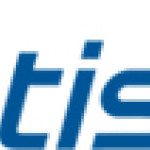- 産業: Telecommunications
- Number of terms: 29235
- Number of blossaries: 0
- Company Profile:
ATIS is the leading technical planning and standards development organization committed to the rapid development of global, market-driven standards for the information, entertainment and communications industry.
A telephone service via which the caller may access information on a charge-per-call or charge-per-time basis.
Industry:Telecommunications
A telephone set that stores a group of numbers frequently called by a customer and transmits the dialing information to the central office by a single action.
Industry:Telecommunications
A telephone switchboard in which manually operated keys are used to make connections.
Industry:Telecommunications
A telephone that is coupled to an imaging device that enables the call receiver or the call originator, or both, to view one another as on television, if they so desire. 2. A military communications terminal that (a) has video teleconference capability, (b) is usually configured as a small desktop unit, designed for one operator, and (c) is a single, integrated unit.
Industry:Telecommunications
A teletypewriter employed in a communication system using radio circuits. Note: Such systems are spoken of as RATT systems.
Industry:Telecommunications
A teletypewriter that can only receive data and does not have a keyboard for transmission.
Industry:Telecommunications
A television signal standard (625 lines, 50 Hz, 220 V primary power) used in France, eastern European countries, the former USSR, and some African countries.
Industry:Telecommunications
A television signal standard (625 lines, 50 Hz, 220 V primary power) used in the United Kingdom, much of the rest of western Europe, several South American countries, some Middle East and Asian countries, several African countries, Australia, New Zealand, and other Pacific island countries.
Industry:Telecommunications
A telex call, originating in or intended for a mobile station or a mobile Earth station, transmitted on all or part of its route over the radiocommunication channels of the mobile service or the mobile-satellite service.
Industry:Telecommunications
A temporal artifact associated with moving images, which artifact occurs when the image is sampled at one frame rate and converted to a different frame rate for display; as a result, motion vectors in the display may appear to represent continuously varying velocities. Note: The subjective effect of the artifact becomes more obvious when the frame-rate conversion is made by simple deletions or repetitions of selected frames (or fields. ) It may become less obvious when interpolated frames (or fields) are generated by using predictive algorithms.
Industry:Telecommunications
